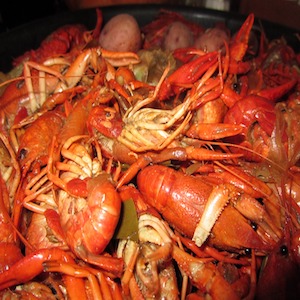Retrospective analysis of Vibrio spp. isolated from marketed crustaceans using multilocus sequence analysis

Accepted: 1 February 2023
SUPPLEMENTARY MATERIAL: 42
HTML: 23
All claims expressed in this article are solely those of the authors and do not necessarily represent those of their affiliated organizations, or those of the publisher, the editors and the reviewers. Any product that may be evaluated in this article or claim that may be made by its manufacturer is not guaranteed or endorsed by the publisher.
Authors
The genus Vibrio includes bacteria with different morphological and metabolic characteristics responsible for different human and animal diseases. An accurate identification is essential to assess the risks in regard to aquatic organisms and consequently to public health. The Multilocus Sequence Analysis (MLSA) scheme developed on the basis of 4 housekeeping genes (gyrB, pyrH, recA and atpA) was applied to identify 92 Vibrio strains isolated from crustaceans in 2011. Concatenated sequences were used for the phylogenetic and population analyses and the results were compared with those from biochemical identification tests. From the phylogenetic analysis, 10 clusters and 4 singletons emerged, whereas the population analysis highlighted 12 subpopulations that were well supported by phylogeny with few exceptions. The retrospective analysis allowed correct re-attribution of isolated species, indicating how, for some pathogens, there may be an overestimation of phenotypic identification (e.g. V. parahaemolyticus). Use of the PubMLST Vibrio database highlighted a possible genetic link between Sequence Type (ST) 529 and ST195 (V. alginolyticus) isolated from a human case in Norway during 2018. In addition to the identification of major risk groups of V. cholerae, V. vulnificus and V. parahaemolyticus, MLSA could be a valid support for species considered a minor risk, such as V. alginolyticus, V. mimicus and V. fluvialis. Due to the increased incidence of vibriosis in Europe, the application of different tools will also have to be considered to investigate the possible epidemiological links of the various species in the perspective of Open Science to protect the consumer.
How to Cite

This work is licensed under a Creative Commons Attribution-NonCommercial 4.0 International License.
PAGEPress has chosen to apply the Creative Commons Attribution NonCommercial 4.0 International License (CC BY-NC 4.0) to all manuscripts to be published.

 https://doi.org/10.4081/ijfs.2023.11045
https://doi.org/10.4081/ijfs.2023.11045



